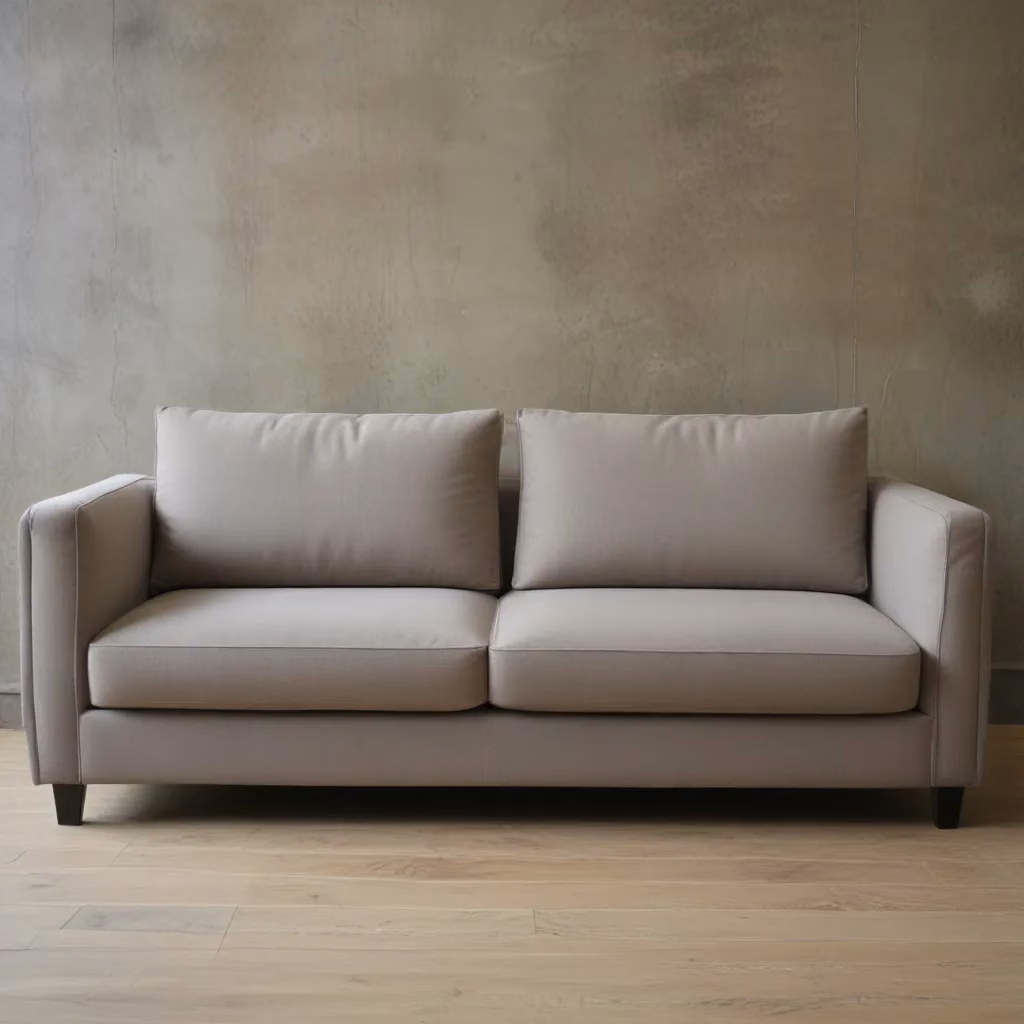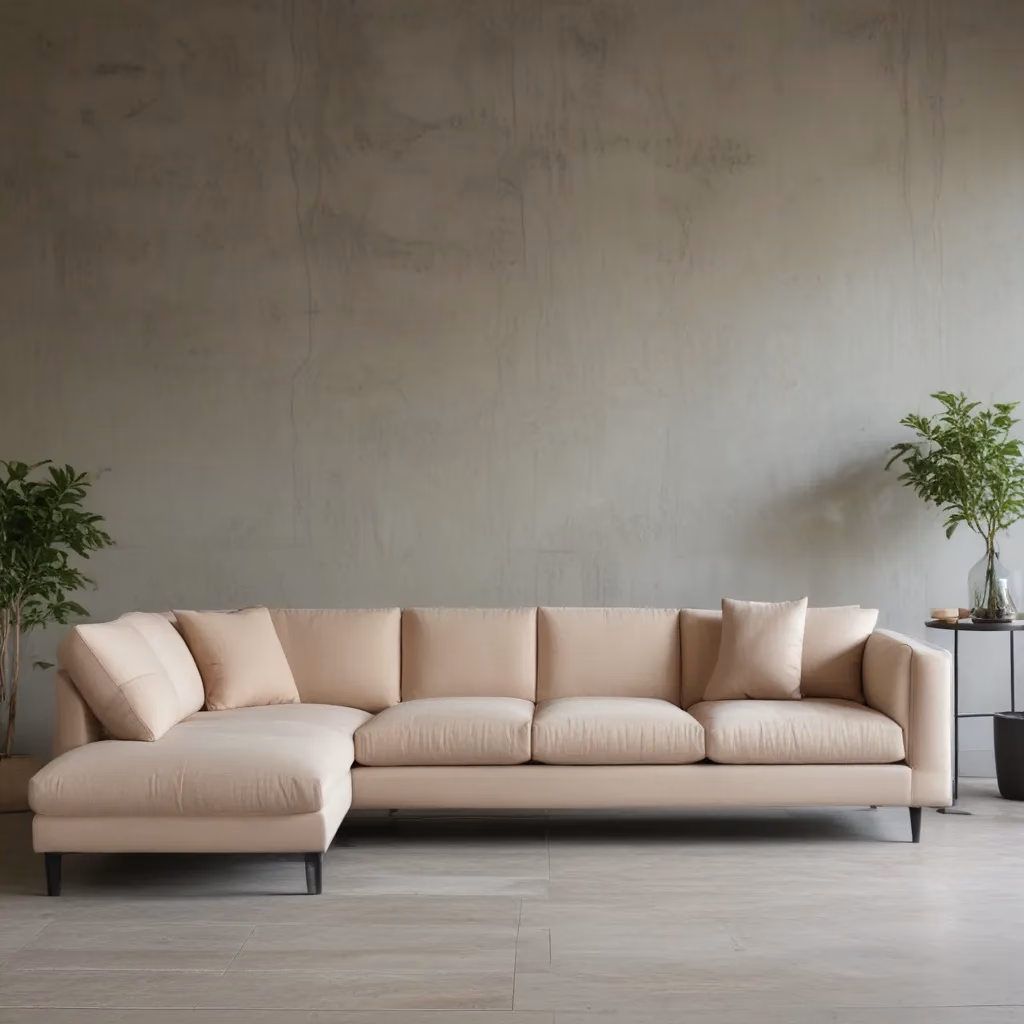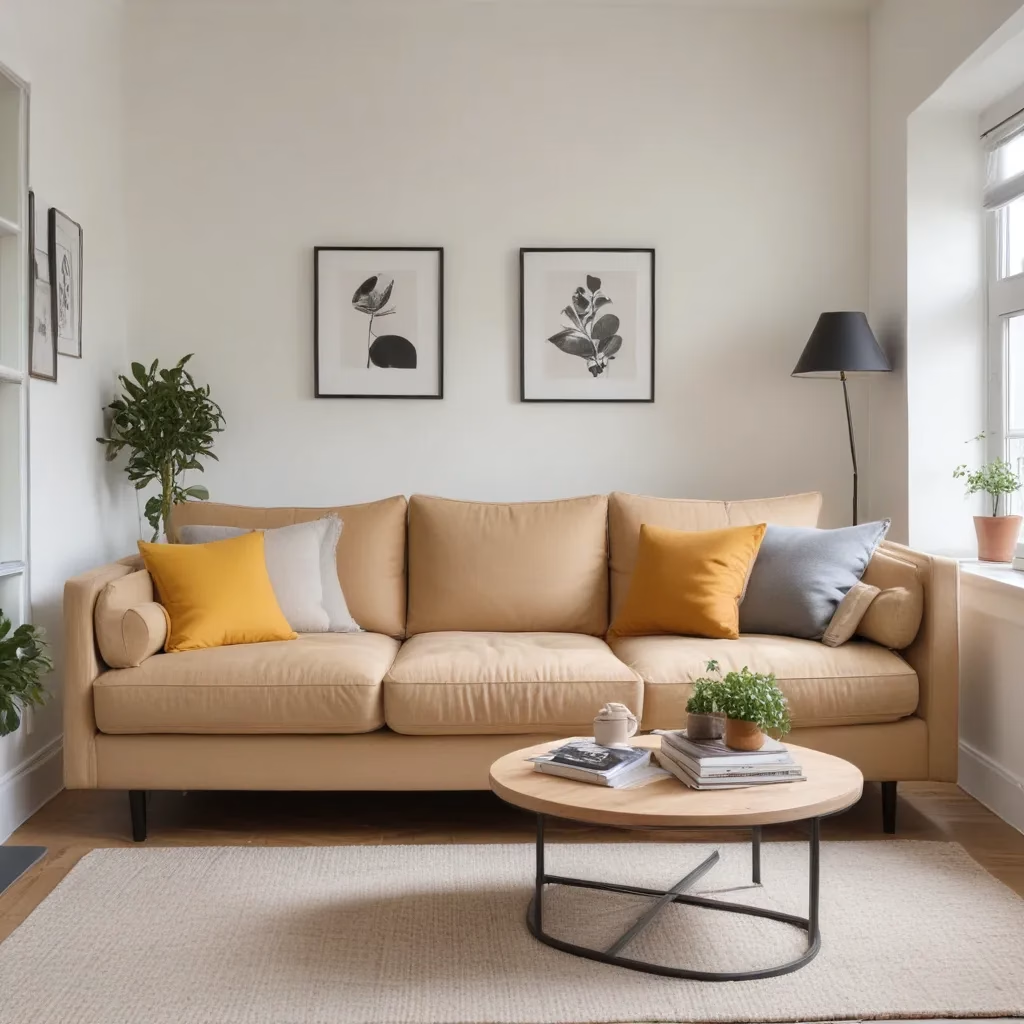
As an experienced furniture consultant and interior design writer, I know that selecting the right sofa size is crucial for creating a cohesive and comfortable living space. In our 15 years installing… At SofaSpectacular.co.uk, we specialize in high-quality sofas, upholstery, and living room décor solutions to help homeowners and design enthusiasts achieve their dream interiors.
Now, this might seem counterintuitive…
In this comprehensive guide, we’ll delve into the key factors to consider when choosing the perfect sofa size, from measuring your living space and accommodating room layouts to selecting the optimal fabric and upholstery. By the end, you’ll be equipped with the knowledge to make an informed decision and transform your living room into a stylish and inviting oasis.
Sofa Sizing Essentials
Measuring Your Living Space
The first step in selecting the perfect sofa is to accurately measure your living space. Start by taking note of the room’s dimensions, including the height, width, and length. This information will help you determine the maximum sofa size that will comfortably fit without overwhelming the room.
When measuring, don’t forget to account for any architectural features or existing furniture that may impact the sofa’s placement. For example, if you have a fireplace or bay window, you’ll need to adjust your sofa dimensions accordingly to double-check that a harmonious layout.
Choosing the Right Sofa Dimensions
Once you’ve gathered the room measurements, it’s time to start considering the optimal sofa size. As a general rule of thumb, aim for a sofa that’s about two-thirds the length of the wall it will be placed against. This proportion helps to create a balanced and proportionate look, without the sofa feeling too large or too small for the space.
If you’re working with a smaller living room, a loveseat or modular sofa may be a better fit, as they offer a more compact footprint while still providing ample seating. Conversely, in a larger or open-concept space, an oversized sectional or U-shaped sofa can help define the conversation area and maximize seating.
When it comes to depth, look for a sofa with a standard depth of around 40 inches (101cm). Anything deeper may feel overly imposing, especially in a smaller room. Remember, the goal is to strike a balance between comfort and proportion.
Accommodating Room Layout
The layout of your living room can also influence the optimal sofa size. For instance, in a TV or family room where people tend to gather and lounge together, a large, squishy corner sofa or sectional may be the perfect choice. However, in a room primarily used for entertaining, two smaller sofas facing each other can create a more sociable arrangement.
If you’re considering a sectional sofa, pay special attention to the dimensions and how it will interact with the room’s layout. As a general guideline, aim for a sectional that takes up no more than half the length of the wall it’s parallel to, leaving ample space for circulation and other furnishings.
Sectionals can also be a fantastic option for small rooms, as they offer a space-efficient alternative to a traditional sofa-and-armchair setup. In this case, choose a sectional that follows the perimeter of the room, maximizing the available space.
Fabric and Upholstery Selection
Fabric Durability Factors
Once you’ve determined the ideal sofa size for your living space, it’s time to consider the fabric and upholstery. The material you choose should not only reflect your personal style but also be durable and suitable for your lifestyle.
For households with pets or young children, performance fabrics like stain-resistant polyester or high-performance microfiber may be the best choice. These materials are easy to clean and can withstand high-traffic use without showing excessive wear and tear.
If you prefer a more luxurious look, velvet or leather sofas can be a stunning option. Just keep in mind that these materials may require more maintenance and may not be the most practical choice for families with active lifestyles.
Upholstery Cleaning Considerations
When selecting sofa upholstery, also consider the ease of cleaning and maintaining the fabric. Look for materials that are designed to resist stains and can be easily spot-cleaned or vacuumed to keep your sofa looking its best.
Opt for fabrics with a tight weave or smooth texture, as these tend to be less prone to trapping dirt and debris. Avoid fabrics with a high pile, such as shag or velvet, as they can be more challenging to keep clean.
Texture and Pattern Trends
In addition to durability and maintenance, the texture and pattern of your sofa’s upholstery can also contribute to the overall aesthetic of your living room. Current trends in sofa fabrics include:
- Velvet: A luxurious and plush option that adds a touch of sophistication to any space.
- Performance Fabrics: Durable, easy-to-clean options that are perfect for families with pets or children.
- Neutral Tones: Timeless shades like beige, gray, and navy that complement a variety of design styles.
- Bold Patterns: Vibrant prints and geometric designs that make a statement and add visual interest.
Remember, the fabric you choose should not only reflect your personal style but also complement the existing décor in your living room.
Living Room Layout Tips
Sofa Placement Strategies
Once you’ve selected the perfect sofa size and upholstery, it’s time to consider its placement within your living room. The way you arrange your sofa can have a significant impact on the overall flow and functionality of the space.
If your living room is centered around a fireplace or TV, position the sofa facing these focal points to create a cozy and inviting atmosphere. For larger rooms, consider using the sofa to define distinct conversation areas, such as a reading nook or a more formal seating arrangement.
Balancing Furniture Proportions
When arranging your living room furniture, it’s important to maintain a sense of balance and proportion. double-check that that the scale of your sofa complements the other furnishings in the space, such as your coffee table, armchairs, and media console.
Avoid crowding the room with oversized pieces or leaving too much negative space. Instead, strive for a harmonious mix of furniture sizes and shapes to create a cohesive and visually appealing layout.
Defining Conversation Zones
In addition to considering the sofa’s placement, think about how the overall furniture arrangement can help define distinct conversation zones within your living room. This is especially important in open-concept spaces, where the sofa can be used to delineate the seating area from other functional zones, such as the dining or kitchen area.
By strategically positioning your sofa and complementary furnishings, you can create a sense of flow and encourage natural interaction among your guests.
Sofa Cleaning & Maintenance
Regular Upkeep Routines
Maintaining the cleanliness and condition of your sofa is essential for preserving its appearance and prolonging its lifespan. Establish a regular cleaning routine, which may include vacuuming the upholstery, spot-cleaning spills, and periodically deep-cleaning the fabric.
Be sure to follow the manufacturer’s instructions for your specific sofa and upholstery material. Some fabrics may require specialized cleaning products or techniques to avoid damage.
Spot Cleaning Techniques
Accidents happen, and it’s important to address spills and stains as soon as possible to prevent them from setting in. Blot the affected area with a clean, absorbent cloth, and use a mild soap and water solution or a fabric-safe cleaner to gently remove the stain.
Avoid rubbing the fabric, as this can cause the stain to spread or damage the fibers. Instead, work from the outside of the stain inward, using a gentle blotting motion to lift the discoloration.
Prolonging Fabric Lifespan
To extend the life of your sofa’s upholstery, consider rotating and flipping the cushions regularly to double-check that even wear. You can also protect the fabric by placing throws or blankets on high-traffic areas, such as the seat and armrests.
Additionally, be mindful of direct sunlight, which can cause the fabric to fade over time. Consider positioning your sofa in a shaded area or using window treatments to filter the light.
Styling for Comfort & Aesthetics
Ergonomic Design Features
Comfort is a crucial factor when selecting a sofa, as this piece of furniture will likely be the focal point of your living room and the place where you and your guests will spend the most time.
Look for sofas with features that prioritize ergonomic support, such as:
- Plush, high-density foam cushions for optimal comfort and pressure relief
- Gently sloping, supportive armrests to promote proper posture
- Adjustable headrests or recliners for customizable relaxation
By investing in a sofa that prioritizes comfort, you’ll create a space that invites you to kick back, unwind, and truly enjoy your living room.
Accessorizing for Visual Appeal
While the sofa’s size and functionality are essential, don’t forget to consider its visual impact as well. Accessorize your sofa with decorative throw pillows, cozy blankets, and complementary side tables or lamps to enhance its aesthetic appeal and create a cohesive, stylish living room.
The texture and patterns you choose for these accents can also play a role in defining the overall ambiance of the space, whether you’re aiming for a cozy, inviting atmosphere or a more modern, minimalist vibe.
Creating a Cozy Ambiance
To transform your living room into a truly inviting and comfortable oasis, consider incorporating additional elements that contribute to a cozy, relaxing ambiance. This may include:
- Layered lighting, such as floor lamps, table lamps, and dimmable overhead fixtures, to create a warm, soothing glow
- Plush, textured area rugs that add warmth and softness underfoot
- Decorative throw pillows and blankets in natural, earthy tones or cozy textures
By thoughtfully curating these elements around your carefully selected sofa, you can create a living room that feels both visually appealing and genuinely welcoming.
The Furniture Buying Journey
Evaluating Quality & Value
When shopping for a sofa, it’s essential to look beyond just the size and style, and consider the overall quality and value of the piece. Examine the construction, materials, and craftsmanship to double-check that you’re investing in a durable and long-lasting piece of furniture.
Look for features like sturdy hardwood frames, high-density foam cushions, and reinforced joints to gauge the sofa’s durability. Additionally, research the brand’s reputation and customer reviews to get a better sense of the product’s quality and longevity.
Navigating Retail Channels
With so many furniture retailers and online options available, the sofa shopping process can feel overwhelming. To simplify your search, start by exploring reputable sites like SofaSpectacular.co.uk, where you can browse a curated selection of high-quality sofas and access helpful buying guides.
Don’t hesitate to visit local furniture showrooms or specialty retailers as well, as they may offer personalized assistance and the opportunity to test out sofas in person. This can be especially helpful if you’re unsure about the comfort or fit of a particular model.
Making an Informed Decision
Ultimately, selecting the perfect sofa is a balance of practical considerations and personal preference. By taking the time to measure your space, evaluate fabric and upholstery options, and visualize how the sofa will integrate into your living room layout, you can make an informed decision that aligns with your needs and style.
Remember, the sofa you choose will be a central feature in your living room, so don’t be afraid to invest in a high-quality piece that will serve you well for years to come. With the right sofa, you can create a warm, inviting, and stylish space that reflects your personal taste and lifestyle.
Coordinating Living Room Décor
Complementary Furnishings
Once you’ve chosen the perfect sofa, it’s time to consider how it will integrate with the rest of your living room décor. Select complementary furnishings, such as armchairs, coffee tables, and media consoles, that echo the style, color, and scale of your sofa.
By coordinating the various elements of your living room, you can achieve a cohesive and visually harmonious look that showcases your sofa as the focal point.
Color, Texture, and Balance
In addition to selecting complementary furnishings, pay close attention to the color, texture, and balance of your living room décor. The sofa’s upholstery can serve as a starting point for your color palette, which you can then expand upon with accents, artwork, and other decorative touches.
Incorporate a mix of textures, such as plush throws, woven baskets, and polished metals, to add depth and visual interest to the space. Strive for a balanced, visually appealing arrangement that doesn’t feel cluttered or overwhelming.
Personalizing the Space
Ultimately, your living room should reflect your personal style and preferences. Don’t be afraid to infuse the space with unique accessories, family heirlooms, or personal mementos that hold special meaning for you.
By personalizing your living room décor, you can create a space that not only looks beautiful but also feels truly like your own.
Sofa as a Focal Point
Designing Around the Sofa
As the centerpiece of your living room, the sofa should serve as the starting point for your overall décor scheme. Build upon the sofa’s size, shape, and upholstery to inform the placement and selection of other furnishings, as well as the room’s color palette and lighting.
For example, if you’ve chosen a large, L-shaped sectional, you may want to position it to define the seating area and then arrange complementary armchairs and a coffee table around it. Alternatively, a sleek, modern sofa may lend itself well to a minimalist, Scandinavian-inspired aesthetic.
Highlighting Unique Features
Don’t be afraid to let your sofa’s unique features shine. Whether it’s a tufted back, flared arms, or a distinctive silhouette, strategically showcasing the sofa’s design elements can help it become a true statement piece within your living room.
Consider positioning the sofa in a way that draws the eye, such as placing it perpendicular to the room’s entrance or angling it to face a window. You can also accentuate the sofa’s features with thoughtful lighting, decorative throw pillows, or a striking area rug.
Creating Visual Interest
By making your sofa the focal point of your living room, you can create a visually engaging and inviting space. Experiment with different furniture arrangements, accessory placements, and lighting solutions to achieve a dynamic, balanced look that keeps the eye moving throughout the room.
Remember, the key to success is finding the perfect balance between form and function – a sofa that not only looks stunning but also provides the comfort and functionality you desire.
So, whether you’re in the market for a luxurious velvet sectional or a modern, streamlined loveseat, keep these essential sofa-sizing tips in mind to transform your living room into a space that truly reflects your personal style and lifestyle. Happy shopping!
Example: Limited-Edition Velvet Sofa Collection 2025



